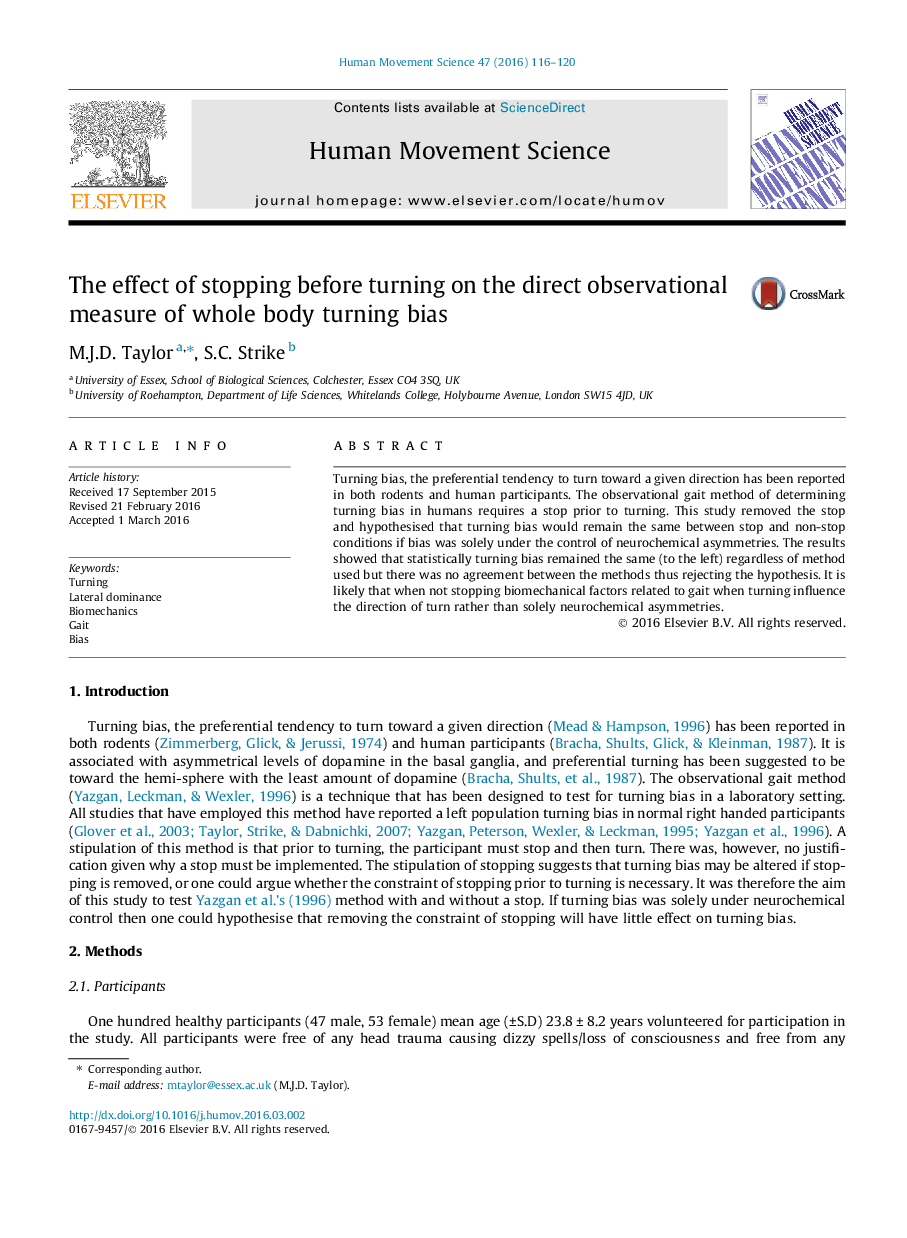| Article ID | Journal | Published Year | Pages | File Type |
|---|---|---|---|---|
| 7291476 | Human Movement Science | 2016 | 5 Pages |
Abstract
Turning bias, the preferential tendency to turn toward a given direction has been reported in both rodents and human participants. The observational gait method of determining turning bias in humans requires a stop prior to turning. This study removed the stop and hypothesised that turning bias would remain the same between stop and non-stop conditions if bias was solely under the control of neurochemical asymmetries. The results showed that statistically turning bias remained the same (to the left) regardless of method used but there was no agreement between the methods thus rejecting the hypothesis. It is likely that when not stopping biomechanical factors related to gait when turning influence the direction of turn rather than solely neurochemical asymmetries.
Related Topics
Life Sciences
Neuroscience
Cognitive Neuroscience
Authors
M.J.D. Taylor, S.C. Strike,
